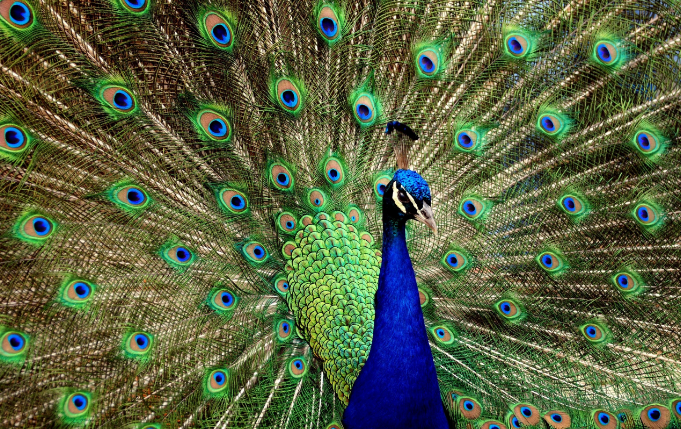The majestic peacock is safe!
Hindus heaved a sigh of relief after the Australian Capital Territory (ACT) Government announced not to continue with Peafowl Management Plan, which Hindus and animal lovers have denounced as hurting since the bird is so much loved.
Bank of England declines to withdraw Beef-laced currency
Emma Thomas, Director-General of Transport Canberra and City Services (TCCS), in an email to distinguished Hindu statesman Rajan Zed, wrote: “I note your concerns and am pleased to advise that the ACT Government will not be removing the peafowl”.
Cows, goats belonging to Hindu family set ablaze
Zed, who is President of Universal Society of Hinduism, had urged the ACT Chief Minister Andrew Barr and Director of City Presentation at Transport Canberra and City Services Stephen Alegria to quash the Peafowl Management Plan and instead think of spreading the population throughout entire ACT of majestic and gorgeous peacock; which symbolized grace, love and beauty; brought joy and harmony to the mind; and reminded celebration of life.
Pakistan: Temple soiled by animal filth irks Hindus (video)
Rajan Zed states that it is sad to learn that TCCS, despite the significant community support for the retention of the peafowl, is still talking about “future management of the peafowl”. TCCS should show some maturity and find something constructive to do with tax dollars instead of being just obsessed with peafowl management. The peacock does not need any “management”, Zed added.
Hinduism cannot be defended by being cruel to animals (video)
Zed pointed out that in Hinduism, the peacock was the mount of Lord Karttikeya (Skanda, Murugan), the god of war. The feathers of the peacock adorned the head of Lord Krishna, an avatar of Lord Vishnu and subject of major Hindu scriptures such as the Bhagavad-Gita and Bhagavad-Purana. It was also associated with other Hindu deities like goddess of knowledge Saraswati, god of storms Lord Indra, etc. Moreover, the peacock was considered auspicious and Hindu families kept peacock feathers in their home shrines.
Peacocks had coexisted harmoniously with humans in Australia since 1800s and should be preserved/protected for upcoming generations if ACT wanted to continue to claim the title as the happiest and most livable city in Australia, Rajan Zed indicated.
Zed further said that besides Hindus, peacocks enjoyed a considerable support in a big sector of ACT community which liked having peacocks around, admiring their iridescent green and blue long tail covert (the train) with feathers bearing colorful eyespots and their complex dance. They actively encouraged peacocks’ presence through regular feeding. In addition, some sectors of the community would not support euthanasia.
Rajan Zed stated that environmental impacts of ACT peacock population were likely to be negligible and they had not been declared an environmental pest anywhere in Australia. Moreover, their activities had not been identified as a key threatening process or a pest species under the relevant Commonwealth or ACT Government legislation. They were not causing an unacceptable damage to social or economic assets of ACT. Their impact on native species populations was minor and there were no reports of humans/livestock contracting disease/parasite from peacocks. Moreover, there were animal welfare issues and high costs associated with the plan which might outweigh its benefits; as the trapping and relocation cost was $1308.68 per bird in 2013 besides loss-of-productivity due to staff diversion, reports suggest.
Zed noted that ACT government should show respect to the religious sentiments of communities. Feeding birds was intrinsic to Hinduism and many started their day by feeding them as an act of kindness and religious duty. Ancient Shvetashvatara Upanishad identified Self with bird: He is the blue bird, he is the green bird.
Hinduism is the oldest and third largest religions of the world with about 1.1 billion adherents and moksh (liberation) is its ultimate goal.

